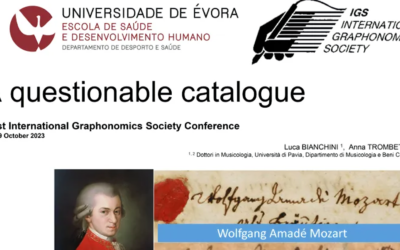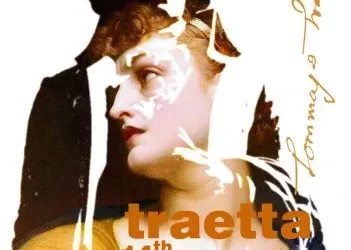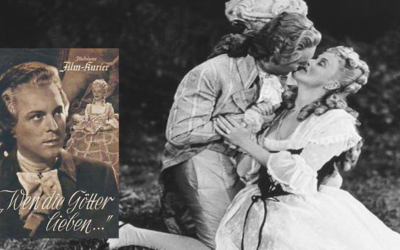A Misleading Legacy
The Questionable Attribution of Mozart’s Offertorium K.34
The Offertorium K.34, Scande Coeli limina, has long been attributed to Wolfgang Amadeus Mozart, but the evidence supporting this claim is far from reliable. Lacking an autograph manuscript and based solely on a questionable 19th-century copy found in Salzburg, the authenticity of this work has come under scrutiny. To make matters worse, the supposed performance date of 21 March 1767 at Seeon Abbey in Bavaria is based on nothing more than speculation from much later sources, with no records placing the Mozart family in the area at that time.
The Offertorium also presents problems in its musical structure and text, which raises questions about the skill of the composer behind it—hardly what one would expect from someone of Mozart’s calibre. Could this be yet another case of later scholars inflating his legacy by attributing lesser works to his name?
This article delves into the historical confusion, Latin blunders, and questionable cataloguing that surround this piece, inviting us to reconsider whether Offertorium K.34 truly belongs to Mozart’s body of work or is just another case of misplaced authorship.
Mozart: The Fall of the Gods
This book compiles the results of our studies on 18th-century music and Mozart, who has been revered for over two centuries as a deity. We dismantle the baseless cult of Mozart and strip away the clichés that falsely present him as a natural genius, revealing the contradictions in conventional biographies. In this work, divided into two parts, we identify and critically analyze several contradictory points in the vast Mozart bibliography. Each of the nearly 2,000 citations is meticulously sourced, allowing readers to verify the findings. This critical biography of Mozart emerges from these premises, addressing the numerous doubts raised by researchers.
"Attributing Offertorium K.34 to Mozart is not just misleading, it reflects the careless methods used by 19th-century scholars to inflate his legacy."
Mozart: The Fall of the Gods
The Questionable Attribution of Mozart’s Offertorium K.34: A Misleading Legacy
Offertorium K.34, Scande Coeli limina, is a work attributed to Wolfgang Amadeus Mozart, yet its authenticity is highly debatable. Allegedly written for soprano, choir (SATB), two trumpets, timpani, two violins, basso, and organ, the piece is composed in C major. It consists of two movements: an aria for soprano (Andante) and a choral response (Cara o pignora, Allegro). However, the entire attribution rests on fragile, late evidence and lacks any solid foundation.
Spurious and Muddled Attribution
The Offertorium’s connection to Mozart is based solely on a suspicious 19th-century copy found in Salzburg, long after Mozart’s death. Its only claim to authenticity? A crude label affixed to the cover, stating “by Wolfgang Mozart.” No autograph manuscript exists, and there is no verifiable evidence linking this work directly to the composer. Such a posthumous attribution raises red flags, particularly when the piece surfaced during an era when attaching Mozart’s name to anything could inflate its value and prestige.
The alleged performance date—21 March 1767 at Seeon Abbey in Bavaria for the Feast of Saint Benedict—is another shaky detail. This claim originates from another copy of the score, which appeared in the mid-19th century, even later than the Salzburg version. Wyzewa and Saint-Foix, two eager biographers, speculated this date simply because it coincides with Saint Benedict’s feast day. Yet, there’s no evidence placing the Mozart family in Bavaria on that date, casting further doubt on this supposed performance. This confusion only underscores how arbitrary and unreliable these claims are.
Misguided Catalogues
The Offertorium appears as K.34 in the Köchel catalogue of Mozart’s works, but it is also listed as WSF 44 in the Wyzewa-Saint-Foix catalogue. The discrepancies between these catalogues are symptomatic of the broader issue: Mozart’s name has been haphazardly attached to numerous works, often without solid proof. Poggi and Vallora, in their catalogue, mention that Leopold Mozart was supervising his son’s education at this time. Yet, if this piece is any indication of such ‘education’, it is hardly impressive.
Latin Blunders and Liturgical Faux Pas
What further discredits this work is the poor Latin in the text. The piece begins with the soprano calling upon the soul of Saint Benedict—an odd choice for a liturgical work dedicated to the saint himself. The choir then responds as if it were Saint Benedict speaking. Such a glaring mishandling of ecclesiastical Latin would not have gone unnoticed by the Benedictine monks who were well-versed in the language. Could this be yet another clue that this work was not crafted by a skilled composer, let alone one with the training attributed to Mozart?
Conclusion
The Offertorium Scande Coeli limina is another example of how easily works have been falsely attributed to Mozart, with little more than speculation and posthumous tampering. The lack of an autograph and the weak historical claims surrounding its performance should make us question its authenticity, not blindly accept it as another work of ‘Mozart’.
As discussed by Luca Bianchini and Anna Trombetta in Mozart: La caduta degli dei (2018), this case illustrates the broader problems in Mozart scholarship, where unfounded attributions are accepted without proper scrutiny. For a detailed examination of this Offertorium, see pages 295-296 of their book.
You May Also Like
K.143: A Recitative and Aria in the Shadows of Doubt
K.143 is a prime example of how Mozart scholarship has turned uncertainty into myth. With no definitive evidence of authorship, date, or purpose, this uninspired recitative and aria in G major likely originated elsewhere. Is it time to admit this is not Mozart’s work at all?
The Enigma of Mozart’s Symphony K.73
The Symphony in C Major K.73 has long puzzled Mozart scholars. Touted as a youthful work of prodigious talent, its origins are murky at best. The title “Symphony,” inscribed on the first page of the autograph, is devoid of the composer’s name, casting immediate doubt on its attribution to Wolfgang Amadeus Mozart. Was this truly his work, or is the Symphony yet another victim of overzealous attribution?
Mozart’s Thematic Catalogue Exposed as a Forgery
A groundbreaking forensic analysis reveals that Mozart’s thematic catalogue, long thought to be his own work, is a posthumous forgery. This discovery, detailed in Mozart: The Construction of a Genius, turns centuries of Mozart scholarship on its head, demanding a re-examination of his legacy.
Bologna Connections
Quirino Gasparini’s rediscovered Mitridate aria takes centre stage in Bern and Basel, shedding light on Mozart’s reliance on this forgotten composer.
International Traetta Award
We are thrilled to announce that the 14th International Traetta Award has been bestowed upon Anna Trombetta and Luca Bianchini. This prestigious recognition honours their outstanding dedication to musicological research on primary sources of the European musical repertoire, offering significant contributions to reshaping the historiography of 18th-century music.
A Legacy Rewritten by the Shadows of History
Mozart’s image, often regarded as a universal symbol of musical genius, was heavily manipulated by the Nazi regime, a fact largely ignored in post-war efforts to “denazify” German culture. From propaganda-driven films to anti-Semitic narratives, Mozart’s legacy is far more complex and troubling than we are often led to believe.







